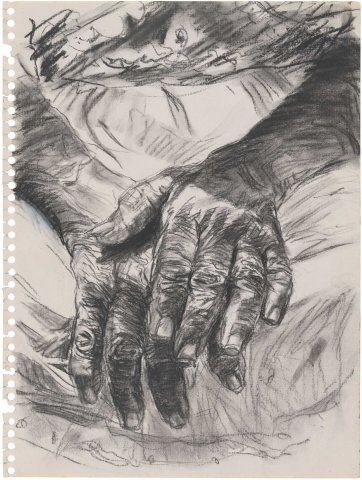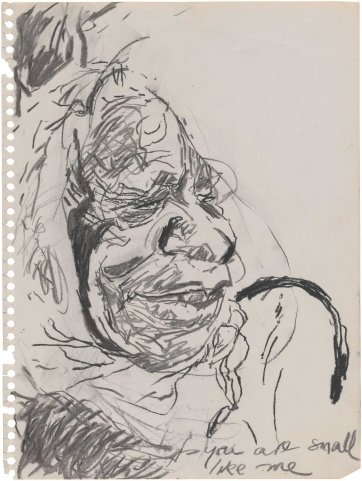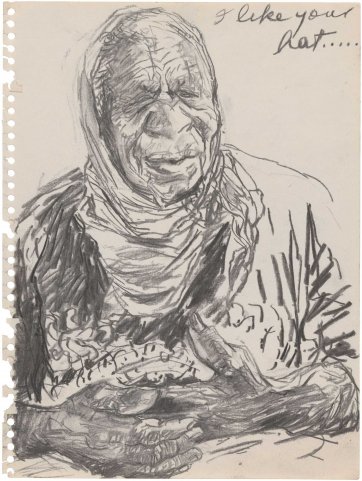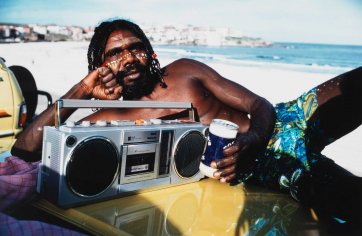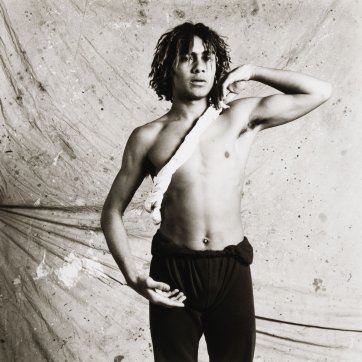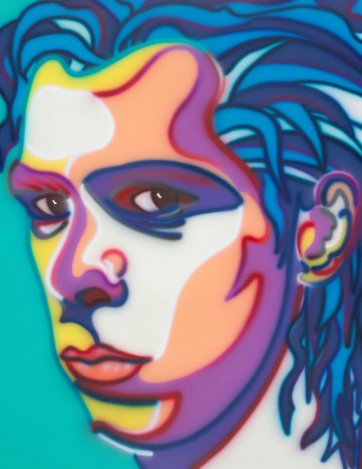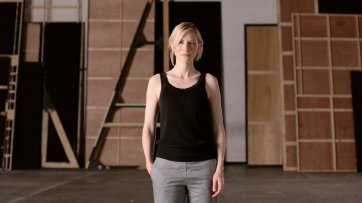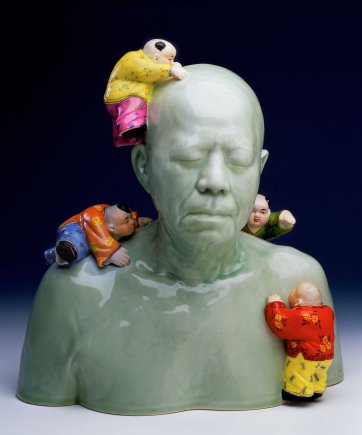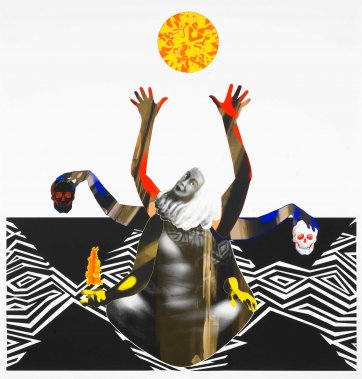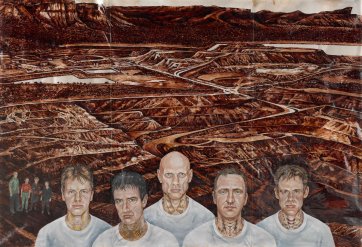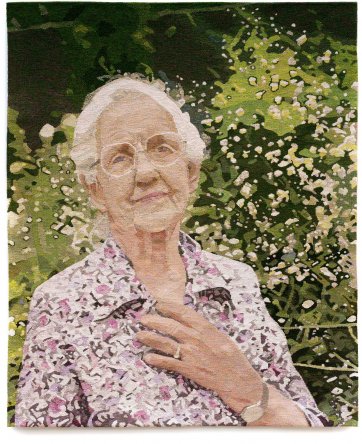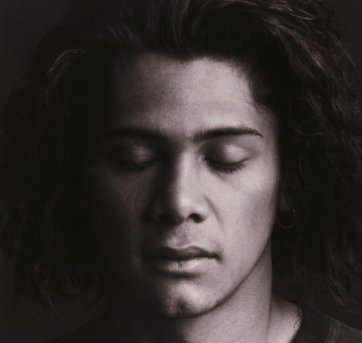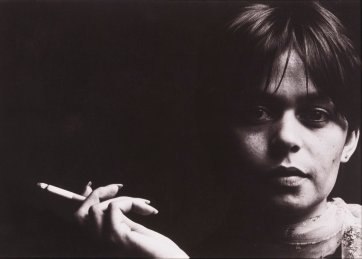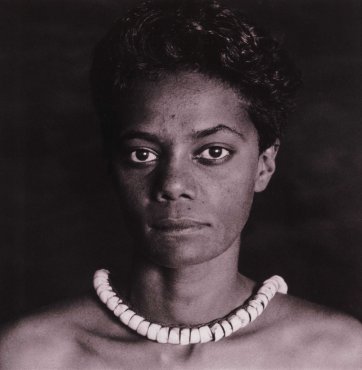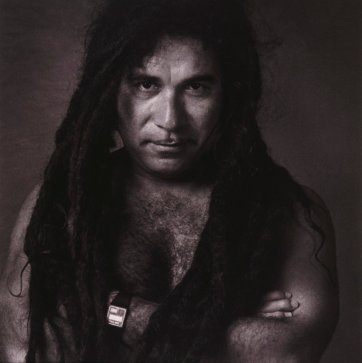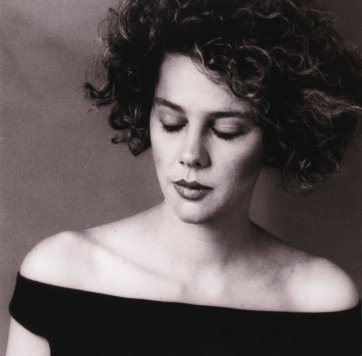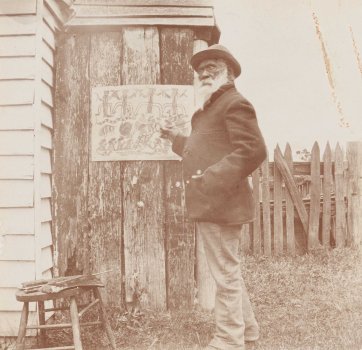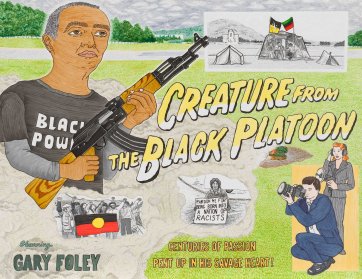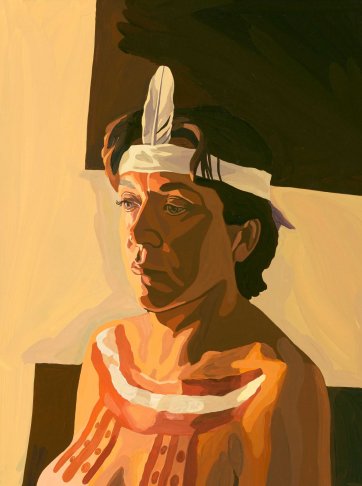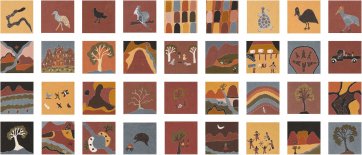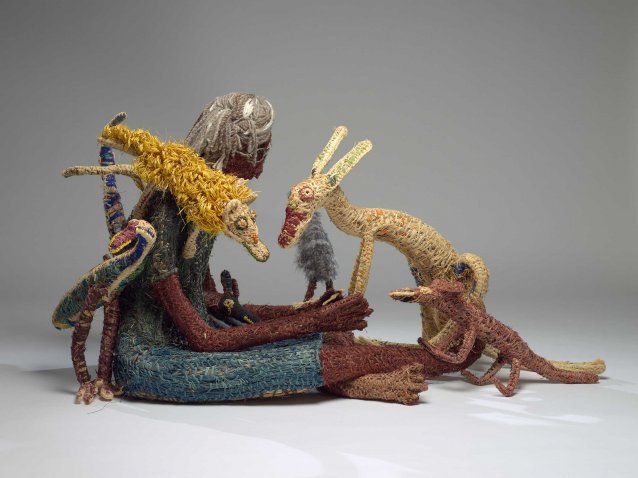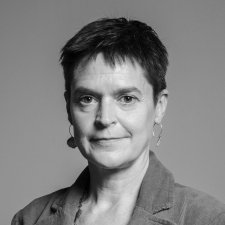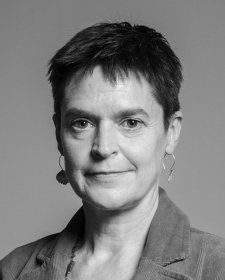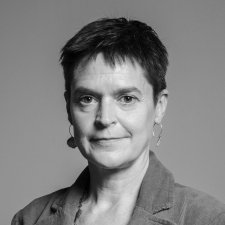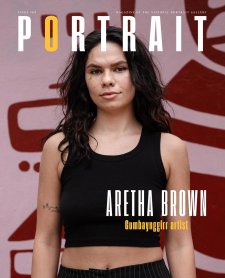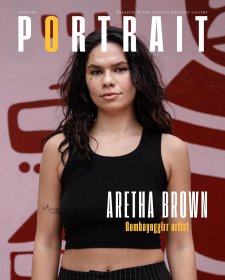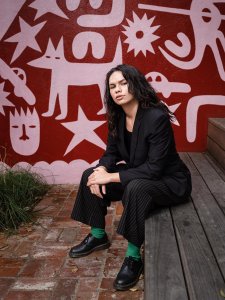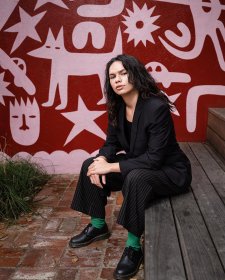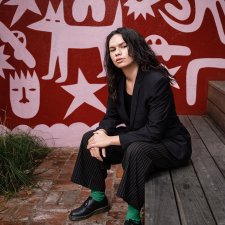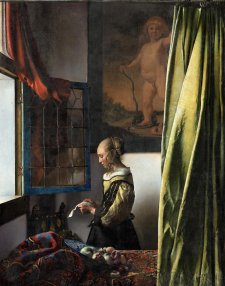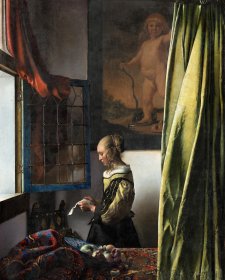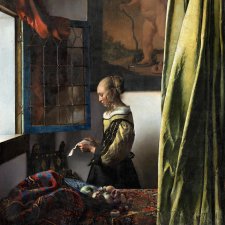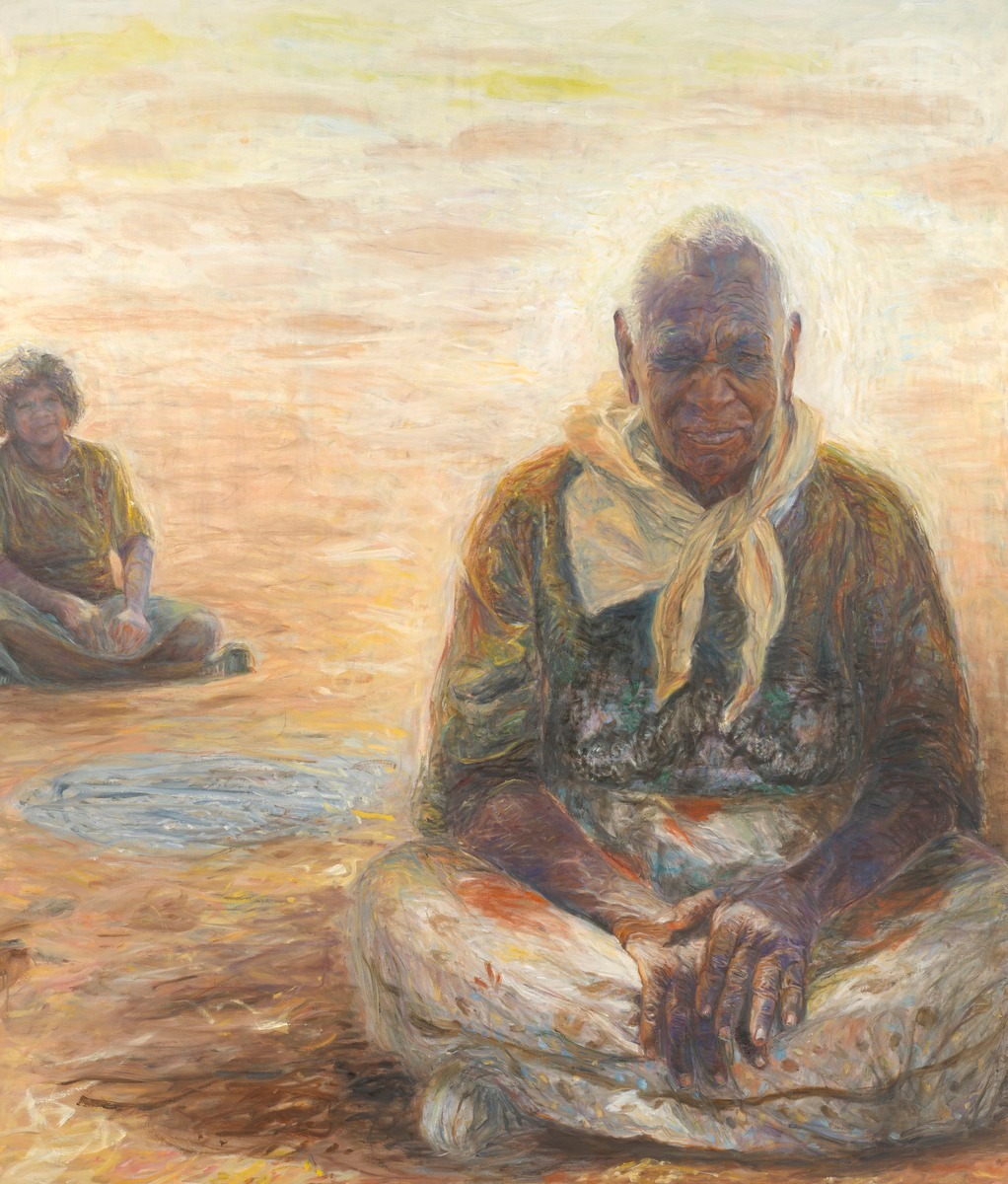
Emily Kame Kngwarreye with Lily, 1993 Jenny Sages. © Jenny Sages
Of the first seven works acquired by the National Portrait Gallery of Australia on 27 May 1998, none were pictures of people who were powerful or beautiful or filthy rich, and there wasn’t a prime minister or a monarch or a Test cricketer in sight. Their subjects were artists, a satirist, a vaudevillian, a musician and a trade unionist. Two of them depicted women and were painted by a woman, and there was one which some would struggle to describe as a portrait at all. All of them were gifts to the Gallery with one exception: a shimmering depiction of Anmatyerre artist Emily Kame Kngwarreye, painted by Jenny Sages in 1993. Should proof be needed that Australia’s National Portrait Gallery was never conceived of as a place for the veneration of staid paintings of (or by) dead white males, Sages’ Emily Kame Kngwarreye with Lily is it.
From its outset, it was clear that the National Portrait Gallery would be a very different institution to the one painter Tom Roberts envisioned at the start of the twentieth century, when he wrote to then Prime Minister Alfred Deakin to encourage the idea of establishing a portrait gallery along the lines of the example founded in London in 1856. Referring to the Australian Parliament in a letter to Deakin in March 1910, Roberts said ‘it disturbs me to think that most of you are likely to go on till the inevitable comes, and leave behind nothing that will give the future anything that will show what you all were as men to look at.’ Implicit in Roberts’ phrase are a number of the concepts underpinning the establishment of NPG London – such as the notion that portraits served a memorialising, reverential purpose, and that qualities such as courage, foresight and leadership (associated only with men, evidently) could be discerned from the accurate transcription of an individual’s outward appearance. In forming our own collection of portraits of those whose lives and stories make them notable or memorable, Gallery curators have of course remained cognisant of these traditional, historical aspects of portraiture. Indeed, for the first 20 years of its life, the Gallery’s permanent displays presented the collection in chronological order, linking us to our handful of international counterparts through what inaugural NPG Director Andrew Sayers called the ‘belief that portraits illuminate history; and that a continuous display of portraits, embracing the historical and contemporary, helps us to understand the way in which individuals have shaped and continue to shape our national identities’.
Equally, however, the collection has always sought to highlight the question of how artists, in their innumerable and unique ways, convey a sense of a sitter’s story. While the Gallery has embraced the concepts of historical significance, likeness and authenticity as criteria for the inclusion of portraits in the collection, it has also foregrounded that Australia is home to ancient First Nations traditions in which identity is not necessarily defined by appearance but by relationships to people, to the past and to place. The equal weight accorded to artist and subject, along with the adaptability of the collecting framework, has supplied a formula for the creation of a diverse and textured collection that enables the Gallery to present a national story that reads, as Sayers once phrased it, ‘like a tapestry, rather than a tombstone’. In this respect, Jenny Sages’ painting of Kngwarreye and other foundational acquisitions set the tone for the building of a collection that continues to test the flexibility and sophistication of what is often perceived as an unbending, narrow field of visual arts practice.
1 2 3 Untitled (Study for 'Emily Kame Kngwarreye with Lily') 1993 All Jenny Sages.
© Jenny Sages
Born to Russian Jewish parents in Shanghai in 1933, Sages is best known as a painter of abstract landscapes and worked for many years as a travel writer and illustrator for magazines such as Vogue before a journey to the Kimberley region of Western Australia in 1983 inspired her to become an artist full-time. Thereafter, Sages started travelling regularly to remote areas of Australia, and during a 1993 trip to the Northern Territory she talked her way onto a flight taking some visiting curators to Anmatyerre Country, where they were to view examples of Kngwarreye’s work. Sages met the artist, and they spent some time sitting together under a tree, chatting while Sages sketched. The resultant drawings, fifteen of which were acquired by the Gallery in 2002, captured the changing expressions on Kngwarreye’s face, and were inscribed by Sages with some of the comments her sitter made during the process: ‘You are small like me’, for instance; ‘I like your hat’; or ‘Have you finished? I’ve had enough.’ Later, back in her Sydney studio, Sages developed the sketches into the huge painting that became the first work purchased for the collection in May 1998, and which shows its eminent subject sitting cross-legged on the ground and squinting in the sunlight. No formality, no posing, no pretensions. No subjecting the sitter to the discomfiture of hours on end in a chair in a studio. Nor any transfer of money or instruction from subject to artist, as Sages has never painted portraits on commission and only ever out of friendship, admiration, inclination and choice.
1 The Movie Star (David Gulpilil), 1985. 2 Some lads #1, 1986. Both Tracey Moffatt.
© Tracey Moffatt
Courtesy of the artist and Roslyn Oxley9 Gallery, Sydney.
The first two photographs acquired by the Gallery were Tracey Moffatt’s portraits of Yolngu man, dancer and actor David Gulpilil AM; and Russell Page, a man of the Nunukl (Noonuccal) and Yugambeh peoples of south east Queensland and co-founder with his brothers Stephen and David of Bangarra Dance Theatre. Both are among the first works Moffatt exhibited (in the landmark exhibition NADOC ’86) and both are fine illustrations of the flair for trickery, appropriation and subversion that have since become recognised as defining features of Moffatt’s work. Though her image of Gulpilil lazing across the bonnet of a car parked at Bondi Beach might seem benignly tongue-in-cheek, it is in fact making an incisive reference to the dispossession on which our purportedly egalitarian, laid-back lifestyle is based. The photo of Page, part of the 1986 series Some lads, was created in refutation of the racist stereotypes established and circulated by nineteenth-century studio photography, in which First Nations subjects were shown as mute, stiffly posed specimens and curiosities. ‘I encourage my subjects to enjoy the staring camera … to intentionally pose and show off,’ Moffatt said in 1987. ‘It captures a lyricism and a barely assigned bold sensuality.’
1 Nick Cave, 1999 Howard Arkley. © Estate of Howard Arkley. Licensed by Kalli Rolfe Contemporary Art. 2 Paul Kelly, 2013 Warwick Thornton. © Warwick Thornton. 3 Portrait of Cate Blanchett, 2008 David Rosetzky. © Commonwealth of Australia. 4 Dr John Yu, 2004 Ah Xian. © Ah Xian.
Having made the commissioning of new portraits a central tenet of its collection-building approach, in 1999 Sayers commissioned Howard Arkley – not someone known for portraiture – to create a portrait of Nick Cave. Some 85 portraits have been commissioned since then, including digital portraits by Warwick Thornton (Paul Kelly, 2013) and David Rosetzky (Cate Blanchett, 2008); Ah Xian’s glazed ceramic bust of Dr John Yu (2004); Bill Henson’s photographic triptych of Simone Young (2002); Brook Andrew’s unique screenprint of Professor Marcia Langton (2009); eX de Medici’s 2001 watercolour on vellum portrait of Midnight Oil; and the woven portrait of Dame Elisabeth Murdoch by the Australian Tapestry Workshop (2000).
1 Simone Young, 2002 Bill Henson AO. © Bill Henson. 2 Marcia Langton, 2009 Brook Andrew, Trent Walter. © Brook Andrew. 3 Nothing's as precious as a hole in the ground, 2001 eX de Medici. © eX de Medici. 4 Portrait of Dame Elisabeth Murdoch, 2000 Australian Tapestry Workshop, Merrill Dumbrell, Christopher Pyett, Normana Wight. © Australian Tapestry Workshop.
Many of the Gallery’s commissions have since become icons both for the institution and contemporary Australian portraiture in general, embodiments of the intuition and daring often inherent in the commissioning process. ‘The artist does not necessarily have to know the subject, or have met the subject,’ Sayers said. ‘Yet there must be some basis – it may be shared background, shared world view or interests, or some stylistic trigger – on which to base the view that the result will be more interesting and more profound than the result of a casual encounter.’ Numerous other works added to the collection – through purchase, donation or bequest – are iconic by virtue of their ability to capture the temperaments and politics of their times along with the spirit of their subjects.
1 Darrell, 1990 (printed 2013). © Michael Riley/Copyright Agency, 2022. 2 Avril, 1986 (printed 2013). © Michael Riley/Copyright Agency, 2023. 3 Maria, 1986 (printed 2013). © Michael Riley/Copyright Agency, 2023. 4 Djon, 1990 (printed 2013). © Michael Riley/Copyright Agency, 2023. 5 Hetti, 1990 (printed 2013). © Michael Riley/Copyright Agency, 2023. All Michael Riley.
Seeing the fifteen portraits by Wiradjuri/Kamilaroi photographer Michael Riley, purchased by the Gallery in 2013, is to view a group portrait of members of the influential community of First Nations creatives formed in Sydney’s inner west in the 1980s, and to understand the power of portrait photography in countering negative representations of the Aboriginal community in news media and historical imagery. Like his friends and subjects – among them artists Tracey Moffatt, Darrell Sibosado and Avril Quaill; activist Maria Cutmore; and curators Djon Mundine and Hetti Perkins, all then at the start of their careers – Riley helped shape contemporary representation and understanding of Australia’s First Nations. Of NADOC ’86, in which he exhibited, Riley said it was the first occasion where Aboriginal artists ‘were dictating what they wanted to show, and how they wanted to show images of their own people’. Riley’s reclamation and reconfiguration of a medium long used to classify and categorise First Nations peoples echoes throughout the NPG collection: in Moffatt’s portraits of Gulpilil and Page, for example; in a tiny turn-of-the-century photograph showing Wurundjeri Elder and artist William Barak creating a painting of ceremony in defiance of white authorities; in TextaQueen’s lurid, 1950s-style hand-drawn poster casting Gumbainggir activist Gary Foley as the hero of a B-grade movie titled Creature from the Black Platoon; and in Arrernte/Kalkadoon artist Thea Anamara Perkins’ diminutive portrait of her filmmaker aunt Rachel, in which the designs painted on the sitter’s body become a ‘joyful assertion of the incredible matriarchy in our culture, our dreaming’.
1 William Barak at work on the drawing ‘Ceremony’ at Coranderrk, 1902 Johannes Heyer. 2 Creature from the Black Platoon starring Gary Foley 2011, 2011 TextaQueen. © TextaQueen. 3 Rachel, 2021 Thea Anamara Perkins. © Thea Anamara Perkins. 4 Ngalim-Ngalimbooroo Ngagenybe, 2018 Shirley Purdie. © Shirley Purdie/Copyright Agency, 2023.
With her multi-panelled self portrait Ngalim-Ngalimbooroo Ngagenybe, created for the Gallery’s 2018 exhibition So Fine, senior Gija artist Shirley Purdie creates an ineffably rich image of her life, her Country and the continuity of culture without once resorting to ‘portraiture’ as many would understand it. Employing ochres she collected on Country, Purdie’s non-representational self portrait is informed by Aboriginal ways of seeing and understanding the world, with each panel relating a story, memory, place or practice that documents self and identity while simultaneously passing on Gija knowledge and culture. Tjunkaya Tapaya’s Ngayulu Minyma Tjanpinya, I am a Tjanpi Woman is likewise both a self portrait and a method of passing on cultural knowledge. A Pitjantjatjara artist and senior member of the Tjanpi Desert Weavers, a not-for-profit Indigenous social enterprise, Tapaya’s self portrait was created with the help of other women – ‘the young women too, so that they learn how to construct the big works. I feel happy when I am including all the other artists in the big work, and I feel happy when I see the young women learning our weaving skills.’
25 years later, these and other defining precepts are threaded through the collection and discernible in many of the 3000+ portraits that have since been added to that initial seven acquired in May 1998. From the beginning, the National Portrait Gallery has signalled its direction as a museum offering a distinct brand of visitor experience, underscored by the specific capacity a collection of portraits has for enabling up-close encounters with others, and relating information about our identity, history and culture. Through its temporary exhibitions, permanent displays and related programs, the Gallery has continued to demonstrate portraiture’s relevance, energy and resonance; while the interpretation of the ever-growing collection creates a means for people to connect with the lives of others: the people we variously revere, revile or desire; those we are most inspired, moved, perplexed or intrigued by; those who best illuminate historical experience and circumstance; and all of the other past or present-day companions whose lives might cause us to reflect on and understand our own.

